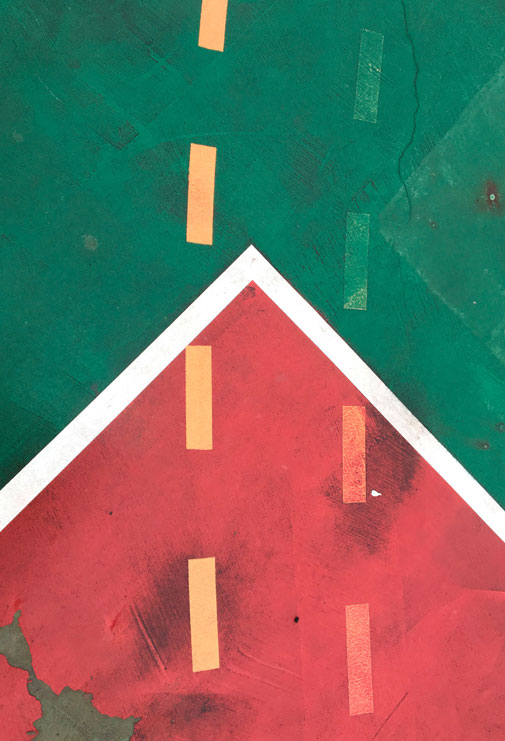- Vol. 07
- Chapter 06

Driving Theory
Clytemnestra, Empress Matilda, Queen Anne –
the fat one, with furniture – and I
are going through some driving theory:
we downloaded some
help
for spotting hazards
spotting, Queen Anne says,
is what I say when I mean blood.
She has a way with words &
anyway the DVLA takes this kind of thing
seriously.
The hazard videographers have mounted a single eye on a vehicle dashboard. The eye has a singular, unswerving devotion to ugliness in all its forms. It moves us through bile coloured streets as cyclists and motorcyclists and small children throw themselves into our path like they’re saying
oh, god, just end it now
we hit the screen once, twice, three times, to say,
HAZARD!although often we are too late. Women with pushchairs bow their heads and run from us as if from a fresh atrocity on the high street where a van is also unloading carrot batons and frozen sweet potato fries. We think the van is out to get us but the women, says the eye, are not a hazard, they are running away from you, they will be fine, so you lose points for that.
Case Study:
Driving Theory
It's early evening and the street lamps are lit. You're driving home at 30 mph, although there are no speed-limit signs. The road is a single carriageway and you're alone in your vehicle. Sleet is falling steadily and it's cold. Ahead, a vehicle is spreading salt on the road. In town there are high-occupancy vehicle lanes, which you don't use. Your home is level with a zebra crossing but you park beyond its markings, further down the road.
It’s early evening and the street lamps are lit.
England’s beauty backslides down the hill
coming eventually to rest under the wheels of a vehicle spreading salt on the road
its warning amber signal warming and dying on the face of a pedestrian
standing by the ghosts of speed-limit signs, wearing a pennant that says
Help.
Empress Matilda stays close to the centre lines, noting the white markers for hazard signs
to afford her a better view of the road ahead.
Sleet is falling steadily and it’s cold.
She pulls her scarf more tightly around her neck.
It’s cold, I wonder about the pedestrian, in the rear view mirror now and thin, thinning, like the side of a sign, but it’s not safe to stop.
In the town there are high-occupancy vehicle lanes, which we don’t use
because we’re alone
and we’re alone in our vehicle,
which we don’t use
except for today, which is exceptional, an exceptional day. We are free.
Clytemnestra practices her signature using her finger on her knee.
You’re home, and your home –
the lights are out, it looks cold, sleet is falling heavily –
is level with a zebra crossing but you park –
taking in the tiny shallow sad breath when the engine dies –
beyond its markings,
further down the road.
